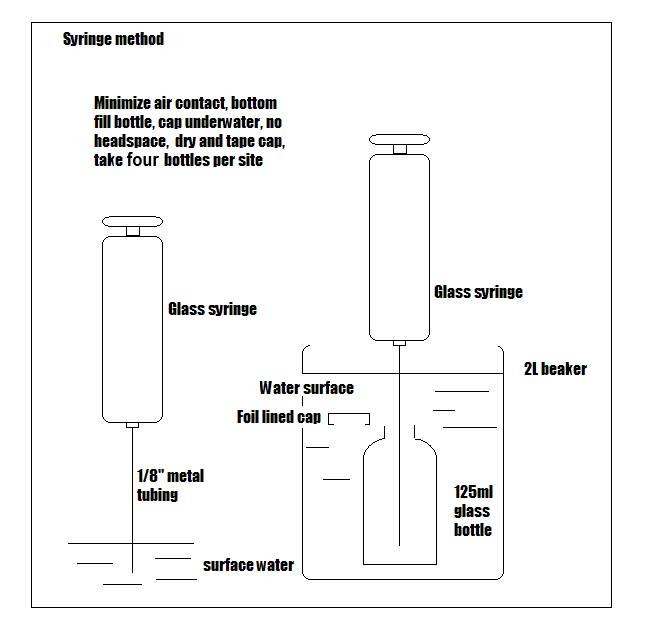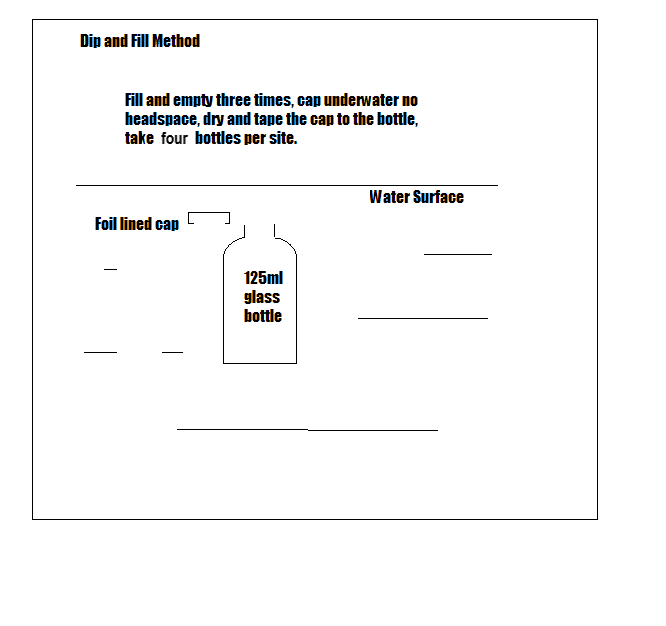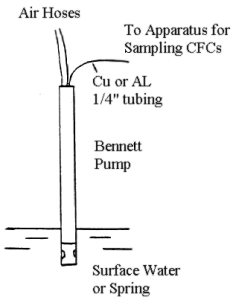Surface Water Sampling
Why Sample Surface Waters for CFCs?
Locating the source of contamination of ground water
The Oklahoma study, (Busenberg and Plummer, 1992) sewage returns were found to be the major source of CFC contamination.
Determining processes occurring in streams
The Oklahoma study (Busenberg and Plummer, 1992) revealed gas exchange between the stream and the atmosphere, and a discharge of old ground water into the stream.
Recharge of ground water by surface waters
The technique demonstrated the recharge of an aquifer by a contaminated stream in Oklahoma.
Identification of flood events
Processes associated with flooding include contamination with CFCs, very high concentrations of nitrogen and argon, suggesting very rapid recharge of the aquifer during flooding in Arizona (Glynn, Busenberg, and Brown) and the recharge of an aquifer through a sink hole in Georgia.
Study contamination history of a river
The Danube River recharges the Little Hungarian Plain Aquifer. The ground water has preserved the history of the contamination of the Danube River. (Bohlke, Revesz, Busenberg, Deak, and Deseo)
Sampling Surface Waters Methods
Syringe Method

Dip and Fill Method

Use of Pumps to Sample Surface Waters

1. The best procedure to sample surface waters is to place a pump in the stream or spring. Sufficient water to cover the pump is required. The sampling procedure is then same as that used for ground-water samples.